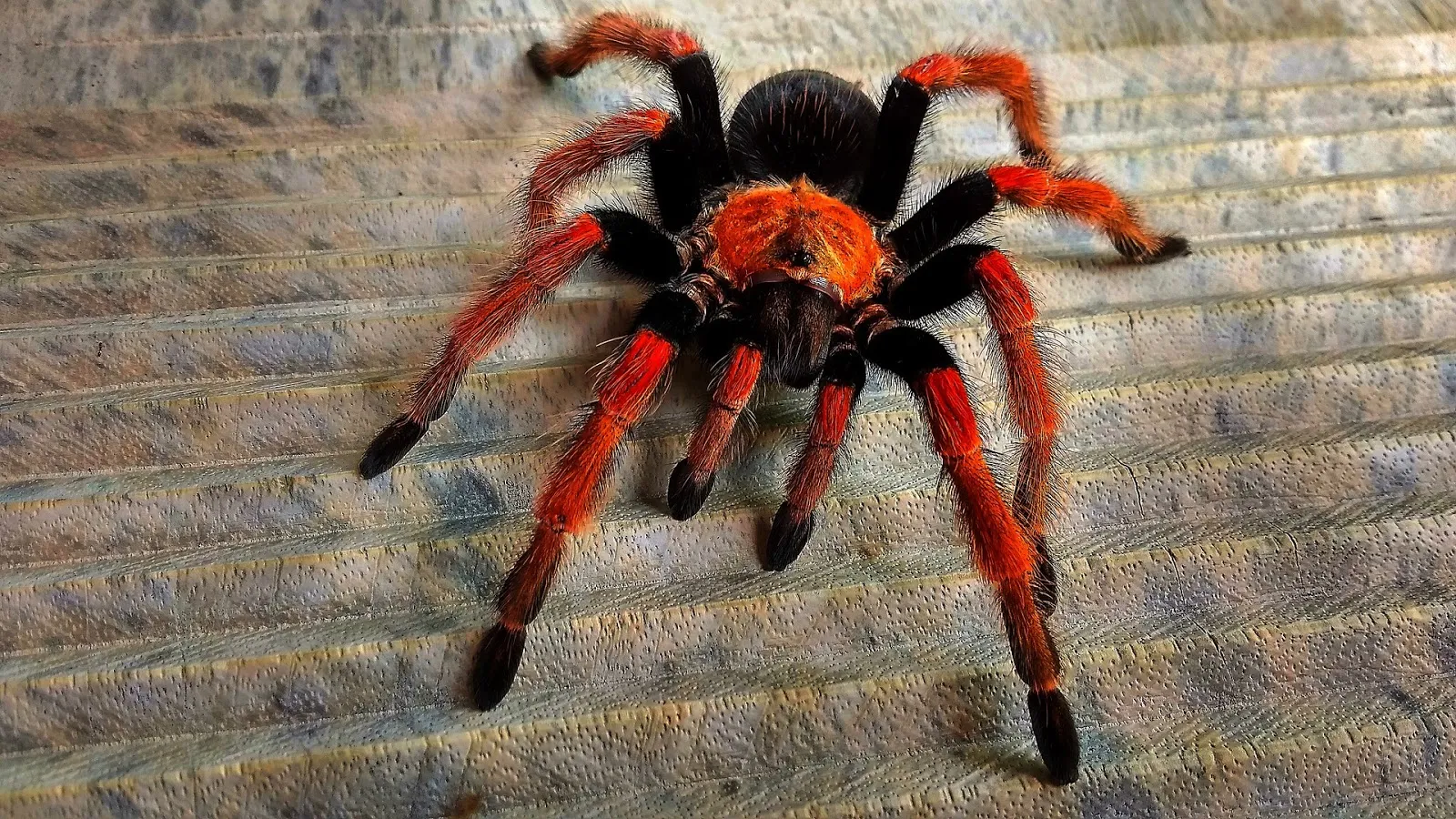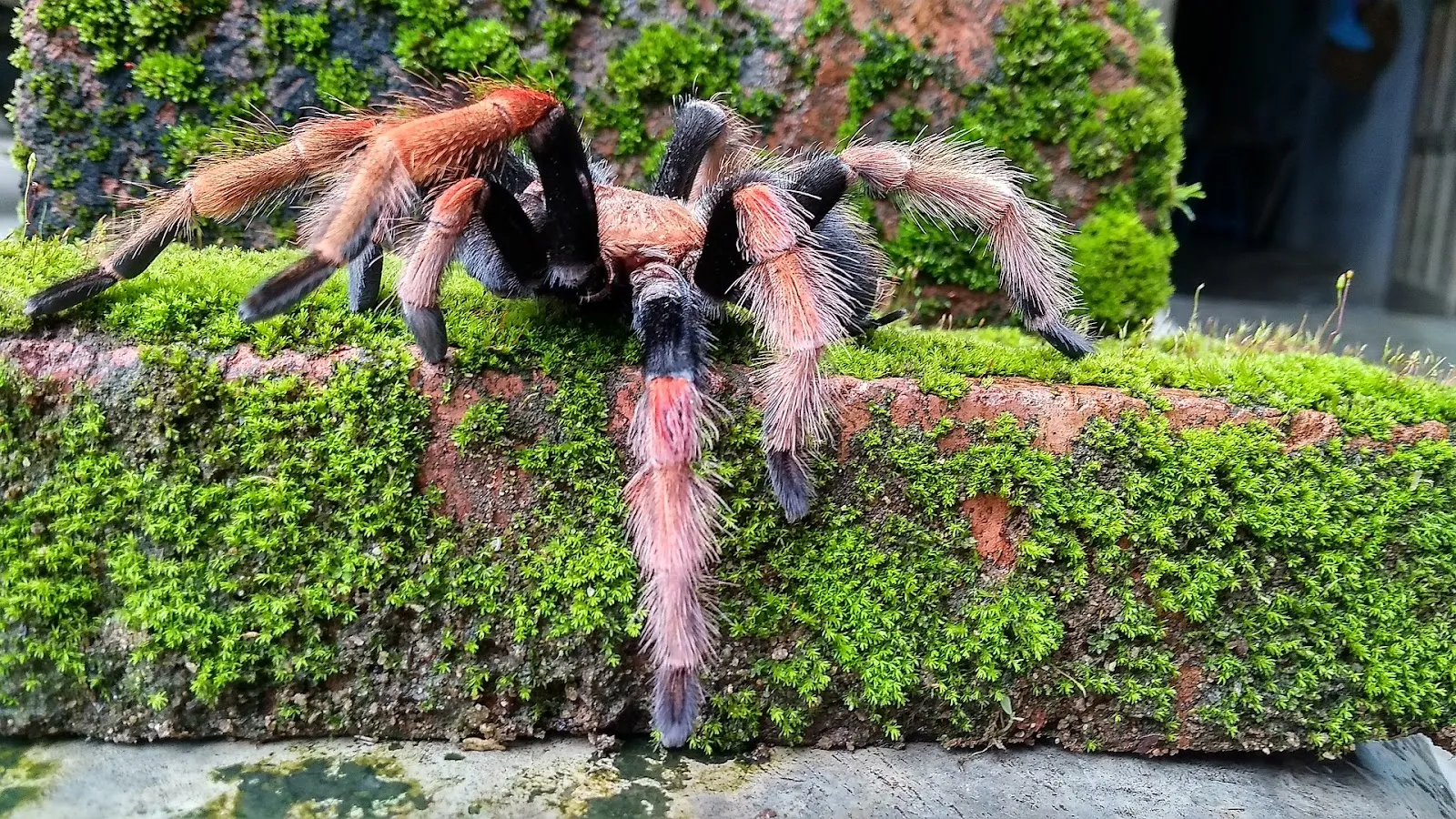Understanding Tarantula Book Lungs
Caring for a tarantula involves understanding its unique biology, and a critical aspect of this is the tarantula’s respiratory system. Tarantulas, like all arachnids, breathe through specialized organs called book lungs. These structures are essential for gas exchange, allowing the tarantula to take in oxygen and release carbon dioxide. Proper care ensures that these vital organs function correctly, contributing significantly to the overall health and longevity of your pet. This guide will delve into every aspect of tarantula book lung care, from understanding their structure and function to maintaining the optimal environment for their health. It is essential for any tarantula keeper to understand the importance of their tarantula book lungs.
What are Book Lungs
Book lungs are respiratory organs found in many arachnids, including tarantulas. They are so named because their structure resembles the pages of a book. These lungs consist of numerous thin, parallel lamellae or plates, which are filled with hemolymph (the spider’s blood). The arrangement of these lamellae increases the surface area available for gas exchange. The book lungs are located on the underside of the abdomen and are protected by a plate-like structure. The design allows for efficient oxygen absorption from the air. Understanding the anatomy of the book lungs will help you better comprehend how to care for them.
Anatomy and Function

The anatomy of the book lungs is fascinating. Each lung comprises a series of stacked lamellae. Air enters through slits (spiracles) on the underside of the abdomen, and then passes between these lamellae. The hemolymph flowing through the lamellae absorbs oxygen from the air and releases carbon dioxide. This process is driven by diffusion, where gases move from areas of high concentration to areas of low concentration. The efficiency of this process is crucial for the tarantula’s metabolism. Book lungs enable tarantulas to survive in various terrestrial environments. The book lungs are located on the underside of the abdomen and are protected by a plate-like structure. (Image: tarantula-book-lungs-anatomy.webp)
Why are Book Lungs Important
Book lungs are essential for a tarantula’s survival. They provide the oxygen necessary for cellular respiration, which is the process that converts food into energy. Without efficient gas exchange, the tarantula would not be able to function correctly, and its health would quickly deteriorate. Book lungs also play a role in regulating the tarantula’s hemolymph. Proper book lung function is directly linked to the overall health and vitality of the tarantula. Any issues with the book lungs can lead to lethargy, decreased appetite, and, in severe cases, death. Consequently, maintaining optimal conditions for the book lungs is a critical aspect of tarantula care.
Maintaining Optimal Conditions
Creating the ideal environment is critical for ensuring the health of your tarantula’s book lungs. This involves careful attention to humidity, ventilation, substrate, and temperature. Each of these factors directly impacts the functioning of the book lungs. Regularly monitoring and adjusting these conditions are essential to prevent respiratory issues. By understanding the specific needs of your tarantula species and providing an appropriate habitat, you can significantly improve its chances of a long and healthy life. Pay close attention to environmental factors and make adjustments as needed to provide your tarantula with the best possible conditions. (Image: healthy-tarantula-habitat.webp)
Humidity and Ventilation

Humidity and ventilation are crucial for book lung health. High humidity, in combination with poor ventilation, can lead to mold and bacterial growth, which can damage the delicate structures of the book lungs. Adequate ventilation ensures that fresh air circulates, removing stale air and preventing the buildup of harmful gases. Use a hygrometer to monitor humidity levels and adjust the ventilation accordingly. For most tarantula species, a balance between humidity and airflow is essential. Depending on the species, humidity levels should be carefully monitored. Good ventilation helps remove excess moisture and maintain air quality. (Image: tarantula-ventilation.webp)
Substrate Choice
The substrate, or bedding, you choose for your tarantula’s enclosure also impacts its book lung health. The substrate should be absorbent to help regulate humidity and prevent mold growth. Good choices include coconut fiber, peat moss, and a mix of these materials. Avoid using substrates that are dusty or contain chemicals, as these can irritate the book lungs. Regular cleaning and replacement of the substrate are essential to maintain a healthy environment. The substrate should be deep enough to allow the tarantula to burrow. Ensure the substrate is free from harmful substances and regularly maintained to prevent respiratory issues.
Temperature Regulation
Tarantulas are ectothermic, meaning they rely on external sources to regulate their body temperature. The temperature of the enclosure should be maintained within a suitable range for your tarantula species. Too high or too low temperatures can negatively affect the tarantula’s metabolism and the function of its book lungs. Use a thermometer to monitor the temperature and provide a heat source, such as a heat mat or lamp, if needed. Avoid placing the enclosure in direct sunlight or near drafts. Maintaining the correct temperature range is critical for the tarantula’s overall well-being and the proper functioning of its book lungs.
Identifying and Addressing Problems

Early detection of respiratory issues can significantly improve the chances of a successful recovery. Keep a close watch on your tarantula for any signs of distress. Common symptoms include lethargy, loss of appetite, and difficulty molting. If you notice any of these signs, it is essential to take immediate action. This section will outline the common issues that can affect book lungs, as well as the best methods to address these concerns. Prompt intervention can often prevent serious complications and ensure your tarantula’s health and longevity. Learn how to identify and manage potential problems to keep your tarantula healthy. (Image: tarantula-respiratory-issues.webp)
Signs of Respiratory Issues
Several signs can indicate respiratory problems in tarantulas. These include labored breathing, where the tarantula appears to be struggling to breathe; open-mouth breathing, which can signal a lack of oxygen; and changes in activity levels, such as lethargy or a lack of movement. Additionally, look for any unusual discharge or discoloration around the book lungs. If you observe these symptoms, it is crucial to identify the underlying cause. Careful observation and prompt action are necessary to avoid further health problems. Keep an eye out for any behavioral changes to ensure your tarantula remains healthy.
Common Issues and Solutions
Several common issues can affect the health of tarantula book lungs. These include fungal infections, bacterial infections, and environmental irritants. Fungal infections often result from high humidity and poor ventilation. Bacterial infections can arise from contaminated substrates or unsanitary conditions. Environmental irritants, such as dust or chemicals, can also damage the book lungs. Addressing these problems involves improving ventilation, adjusting humidity levels, and maintaining a clean enclosure. In some cases, veterinary intervention may be necessary. Keep the enclosure clean, maintain optimal humidity and ventilation, and address issues immediately to protect your tarantula’s book lungs.
Preventative Measures

Prevention is always better than cure. Implement several preventative measures to protect your tarantula’s book lungs. This includes providing a clean and well-ventilated enclosure, maintaining the correct humidity and temperature levels, and using a suitable substrate. Avoid introducing any potential irritants, such as strong chemicals or dusty materials, into the enclosure. Regularly monitor the tarantula for any signs of illness and address any problems promptly. Implement regular maintenance practices to ensure that the tarantula’s environment remains healthy and conducive to respiratory health. These proactive steps will help ensure that your tarantula remains healthy and lives a long life.
Diet and Hydration for Lung Health
A balanced diet and proper hydration are crucial for maintaining the overall health of a tarantula, including the health of its book lungs. The diet provides the necessary nutrients for the tarantula’s immune system, which helps defend against infections. Hydration is essential for proper bodily functions and the efficiency of gas exchange in the book lungs. Learn how to provide a diet that supports your tarantula’s health and how to make sure it has access to clean water. Providing the right nutrition and hydration contributes to a healthy tarantula and supports its book lungs. (Image: tarantula-hydration.webp)
Impact of Diet on Book Lungs
A tarantula’s diet directly affects its overall health and the function of its book lungs. Provide a diet that is appropriate for the tarantula’s species and age. This typically consists of insects such as crickets, mealworms, and roaches. These insects provide essential proteins, fats, and other nutrients. Overfeeding can lead to obesity, which can put stress on the respiratory system. Avoid feeding your tarantula insects that have been exposed to pesticides or other harmful chemicals. A well-balanced diet will help support the tarantula’s immune system, making it more resistant to respiratory infections. Feed your tarantula a varied diet, ensuring it gets all the necessary nutrients to stay healthy.
Watering and Hydration Techniques

Proper hydration is critical for tarantula health. Provide a shallow water dish in the enclosure filled with clean, fresh water. Ensure the water dish is stable and not easily tipped over. Replace the water regularly to prevent the growth of bacteria and fungi. In addition to a water dish, you can mist the enclosure occasionally, especially for species that require higher humidity. However, avoid over-misting, as this can lead to excessive humidity and potential respiratory issues. Monitor the tarantula’s behavior and the enclosure’s humidity levels to ensure adequate hydration. Always provide access to clean water to support proper bodily functions and the health of the book lungs.
Advanced Care Tips
Beyond the basics, several advanced care tips can help optimize the health of your tarantula’s book lungs. This includes regular observation of your tarantula’s behavior, understanding when to seek veterinary care, and providing enrichment to keep your tarantula active and engaged. Pay close attention to any changes in behavior, such as lethargy, loss of appetite, or difficulty molting. Learn how to recognize when professional help is needed to ensure your tarantula receives the best care possible. By implementing these advanced techniques, you can ensure that your pet receives the best possible care. (Image: tarantula-molting.webp)
Regular Observation
Regular observation is key to maintaining your tarantula’s health. Observe your tarantula daily for any signs of distress or changes in behavior. This includes monitoring its activity level, feeding habits, and overall appearance. Pay attention to the condition of its book lungs, ensuring they appear clean and healthy. Early detection of any potential issues can prevent serious complications. Keep a detailed log of your observations, noting any changes or concerns. Regular monitoring allows you to quickly respond to any health problems, supporting a long and healthy life for your tarantula.
When to Seek Veterinary Care

Knowing when to seek veterinary care is essential for tarantula owners. If you notice any signs of illness or distress, such as labored breathing, loss of appetite, or unusual discharge, consult a veterinarian experienced in exotic animals immediately. Early diagnosis and treatment can significantly improve the chances of a full recovery. Be prepared to provide information about your tarantula’s environment, diet, and any recent changes. Your veterinarian can conduct diagnostic tests and provide appropriate treatment. Seeking expert help when needed ensures that your tarantula receives the best possible care. (Image: veterinary-care-tarantula.webp)
